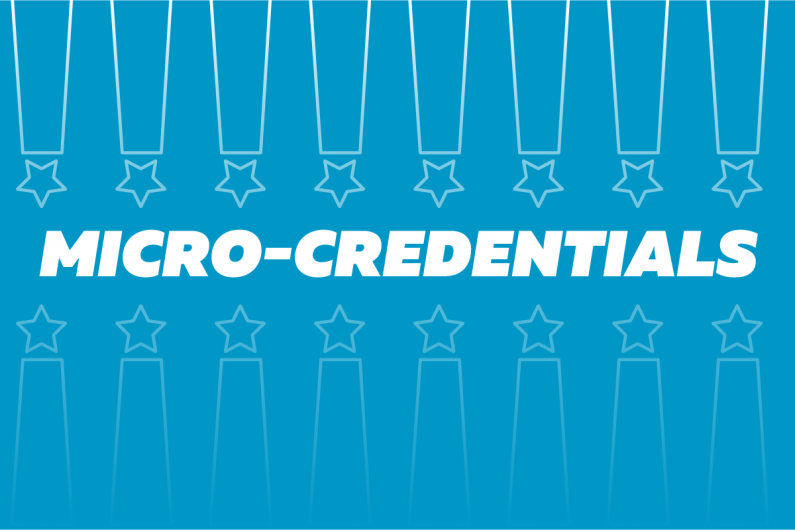Micro-credentials

Find out what micro-credentials are, and how they could help you upskill or change career.
What's on this page?
- What are micro-credentials?
- Differences between micro-credentials and qualifications
- A qualification or a micro-credential?
- Where to get micro-credentials
- How to get a micro-credential
- Length of time to get a micro-credential
- Cost of micro-credentials
- Fees free and student loans
- Digital badges, nano-degrees and managed traineeships
What are micro-credentials?
Micro-credentials are a formal way of recognising your skills and knowledge in a particular area that employers are looking for. They are aimed at people who want to:
- upskill, or learn a specific skill
- work with technology that is changing rapidly
- change careers quickly, without having to take time off work to train
- get specialised skills that employers are looking for
- get credit for skills they already have.
Micro-credentials cover a wide range of subjects, from electric vehicle battery diagnosis to kitchen installation.
Check the NZQA website to find out what micro-credentials are available. This information is updated as new micro-credentials become available.
Differences between micro-credentials and qualifications
Micro-credentials differ from formal qualifications. They:
- have to meet a range of requirements, including evidence of need from employers, industries, communities and iwi
- can’t duplicate skills or topics already taught in qualifications
- are worth between five and 40 credits, which means they are smaller than qualifications (which range from 40 to 360 credits).
You may be able to use micro-credentials towards gaining a qualification. The education provider will know what qualification a micro-credential may be used for.
A qualification or a micro-credential?
Micro-credentials aren’t a substitute for qualifications that are entry requirements for a job.
However, for some jobs without specific entry qualifications, a micro-credential that demonstrates you have relevant training and experience can help you get a position. For example, someone who completes BCITO’s managed traineeship, or micro-credential, in kitchen installations may be able to get a job working for a builder installing kitchens, but not doing other specialised building work.
Where to get micro-credentials
Micro-credentials may be offered by:
- universities, wānanga, Te Pūkenga and private training establishments (PTEs)
- employers and professional bodies, either in partnership with tertiary education providers or directly.
How to get a micro-credential
To get a micro-credential you may need to:
- complete online and classroom study
- learn skills, particularly trade skills, on the job
- provide evidence of your existing skills to credit toward part of, or a whole micro-credential.
Length of time to get a micro-credential
The time it takes to complete a micro-credential depends on:
- the time you have available to study, and your study skills
- the level of the micro-credential
- the number of credits in the micro-credential. One credit is approximately 10 hours of learning, so a 5-credit course is approximately 50 hours of learning.
Learners should be able to complete most micro-credentials without taking time off work.
Cost of micro-credentials
Contact the education provider to find out the cost of micro-credentials.
Fees free and student loans
Micro-credential learners are not eligible for student loans or allowances, but may be eligible for the Fees Free initiative.
Digital badges, nano-degrees and managed traineeships
Micro-credentials have different names, including:
- nano-degree
- nano-credential
- managed traineeship
- brand names, such as EduBits, offered by Otago Polytechnic.
If you complete a micro-credential, your provider might issue you with a digital badge, which you can display online.
NZQA-approved micro-credentials can also be displayed on your record of achievement.
Find out more
Updated 29 Aug 2023